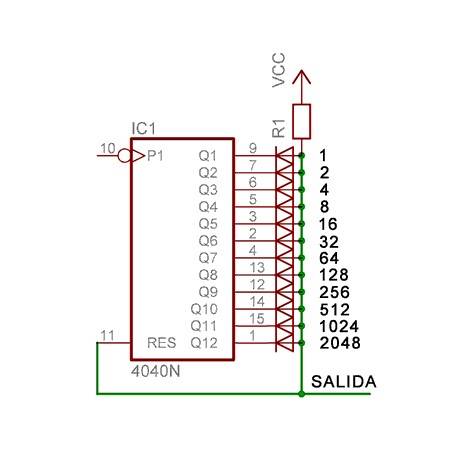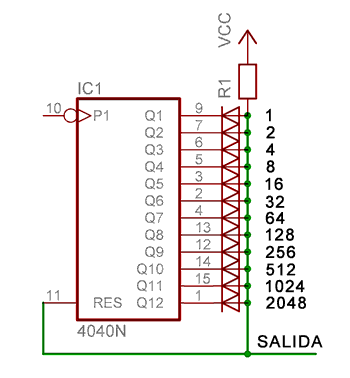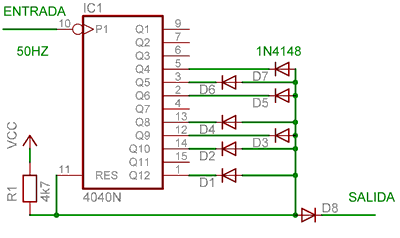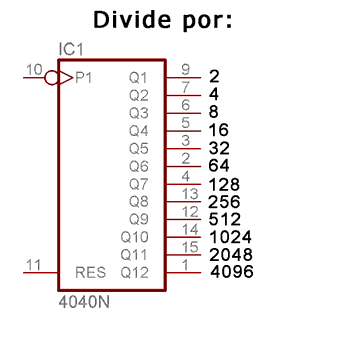Electronics tutorials
Viewed products
-

Integrated circuit CD4040
The integrated circuit CD4040 is a...
 View larger
View larger Integrated circuit CD4040
The integrated circuit CD4040 is a programmable divider. Its mission is to divide the present frequency in pin 10.
More info
In the following table, we can see the values by which it divides the entrance frequency depending on the exit pin.
However, if we place diodes with an anode connected between each other and connected to pin 11 RESET at the exit pin and at the positive power with a resistor; and the cathodes of those diodes to the dividing exit pins of the integrated circuit, we obtain the entrance sign divided in half, as if the diodes weren’t there.

Since the process is a bit complicated, here is an illustration of how it’s done. The division we’ve obtained by putting the diodes would be the correspondent "weight" of each pin. Then, how do we calculate the diodes that we need to insert in order to divide the power by the frequency that we want? We need to subtract what we want to divide by the "weights" of the diodes.
If the subtraction is possible, we’ll place the diode on the pin which can be subtracted; if the subtraction is not possible, we won’t put a diode. For example, we are making a clock and we want to obtain one impulse perminute, starting on 50 Hz of electric current (in Spain).
50 Hz are equivalent to 50 impulses per second; therefore, in one minute (6 0 seconds) it would be 50x60=3000 impulses. That is why we need to divide the electric current frequency by 3000 to obtain one impulse per minute.
In the following table we can see how the subtraction of the division we want is done, without the "weight" of the corresponding pin. If this subtraction is possible, we’ll insert its value and we’ll have to put a diode in this pin. We repeat this with all of the "weight" until we reach 0.

This would be our last diode and the electric scheme would look like this.



